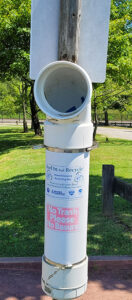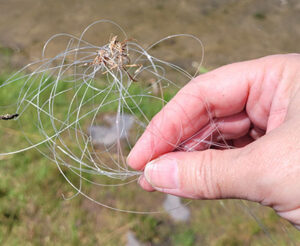We are in the height of summer and the entire water column is active. We’ve been hitting the lakes and ponds of North Jersey, fly fishing for bass, bluegill, crappie… and monofilament.
Whenever we give a lecture, the “sad joke” we always tell is “walk 10 minutes past the last cigarette butt you see if you are looking for fresh water.” Whether they are anglers, hunters, hikers, or some teenagers drinking in the woods at night, we’ve all come across trash while we are out fishing.
It makes us crazy.
And I’m sure like us, many of you pick it up on your way out. I keep a small plastic bag with me and pick up trash as we head back to the truck. Cans, cigarette butts, and beer bottles, but the one that bugs me the most is when I come across a bird’s nest of monofilament.
As anglers, we all know better. This garbage will get into the water, will trap wildlife, kill fish and birds, and do a lot of harm.
It’s frustrating and it’s lazy.
We are lucky enough to have a few different ponds in the town we live in and enjoy fly fishing on the hyper-local level. We are even more lucky that every (and I mean every) body of water has a monofilament recycling tube. It is incredibly convenient and a great way to get rid of my old bits of tippet when I retie.
That’s why I was so frustrated at our most recent visit to the lake. There was monofilament EVERYWHERE!
I reeled it in on my fly. I found it along the shoreline of the lake, I found it NEXT TO the garbage can.
In total I picked up eight separate nests worth of monofilament. And there was no reason for it.
So make sure you “carry in/carry out” and if you see some trash as you “carry out,” grab it along the way… especially monofilament.

